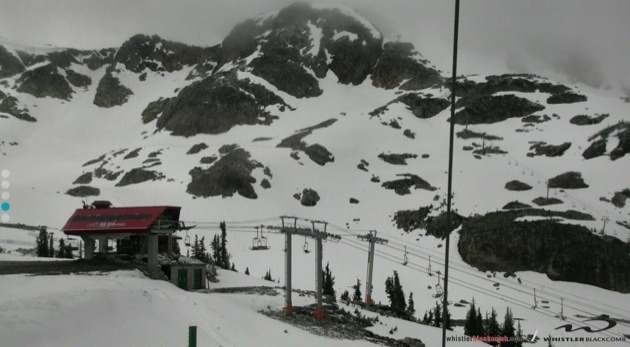Spring flooding along rivers in B.C. now appears unlikely, but there’s a growing threat that much of the province may be in for another dangerously dry summer.
That’s the indication from the latest measurements posted by B.C.’s River Forecast Centre.
As of June 1, B.C.’s alpine snowpacks were at 23 per cent of normal for that time of year – a record low.
A warmer than normal May caused the snowpack to melt off very rapidly.
“Current snow conditions are more typical of late June or early July,” the forecast centre’s latest bulletin said, resulting in many rivers reaching flow conditions that are three to four weeks ahead of usual.
“Most rivers have likely experienced their peak levels for the year, unless an extreme rainfall event occurs in June or early July,” the bulletin said.
Preliminary data for the Fraser River at Hope shows the river flow peaked at 6,130 cubic metres per second on May 8.
That date is the earliest on record that the lower Fraser has peaked and it’s also the second lowest peak flow on record. Normally the Fraser peaks in mid-June.
Fishery biologists have already sounded a warning that low streamflow conditions could create particularly challenging water conditions for salmon returning to spawn.
June has so far seen cooler temperatures and moderate rainfall.
The forecast centre says below normal stream flows are likely across B.C. this summer if there’s near-normal precipitation for the rest of the spring and summer.
Last year’s severe drought triggered extreme water sprinkling restrictions in the Lower Mainland, as well as angling closures and heightened risk of forest fires across much of the province.
